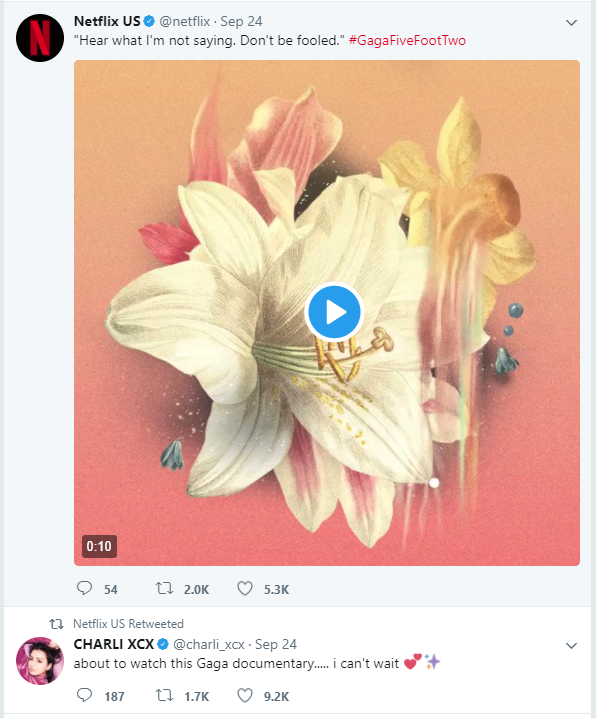Increase Content Engagement Without Upping Budget

Increase Content Engagement Without Upping Budget
In February 2017, Gartner predicted that the global market for SaaS was expected to reach a total of $46.3 billion, an increase of 20.1% on 2016. This trend of double-digit growth from the previous year is expected to continue into 2018 (19.01%), 2019 (17.63%) and 2020 (16.75%), by which time the total SaaS market will reach $75.7 bill.
One of the best ways that a growing SaaS company can break into this burgeoning market is by heavily investing in a content strategy. Great content is democratic — it can help small companies take on the big players.
To be successful, it’s essential that your content engages with your customers in the deepest way possible. If your customers are not engaging with your content, you can be sure they’ll find what they need elsewhere. Increasing content engagement is not always cheap. Working with influencers, pitching to national newspapers, and paying for advertising comes at a premium.
To help out fledgling SaaS startups, we’ve rounded up some easy ways you can up content engagement — without necessarily upping your budget.
Start with clear objectives: be strategic.
Money gets wasted by marketers who aren’t being strategic enough about their content. And good strategy doesn’t have to cost the Earth — you just need to be super in tune with your niche and industry.
The first things to ask yourself are:
- Why are you creating content?
- Who it is for?
- How will it provide a solution to your customers’ problems?
The significance of knowing and understanding your target audience cannot be overstated. Finding the right audience for your content is absolutely crucial. Your content could be clean, concise and catchy, but if the wrong people are looking at it, then they aren’t going to engage with it – no matter how good it is.
Doing customer research due diligence will help you build a relationship with your customers, taking the first step on the road to winning the battle for engagement.
- Start by building out comprehensive customer avatars through interviews and user testing
- Routinely road test new content ideas on alreadyengaged customers and fans. Split test new content departures
- Keep reviewing audience engagement levels, and invest more time and money into stuff that’s already performing well.
Understand the difference between reach and engagement
Savvy SaaS marketers need to get to grips with content marketing metrics like reach and engagement, and create realistic and trackable goals and KPIs to ensure budget efficiency.
Reach and engagement should not be treated as partners, but as cousins. They are related, but not bedfellows. Reach is how many people see your content, while engagement is the level of interaction you receive.
Reach — number of followers, impressions etc.
- Makes your brand visible to customers
- Useful stat to present in the boardroom
- People being aware of your brand does not mean that they care about it
- Numbers can be artificially inflated
Engagement — likes, shares, comments etc.
- It turns people into supporters of your brand, not just followers
- When people become supporters, they may then spread your message with their community (these are your VIPs and brand advocates)
- Engaging with your customers directly is time-consuming
- People can engage negatively with your brand, turning supporters into opposers.
Know the difference between reach and engagement, and make sure all your content marketing efforts are focused on true engagements, not vanity metrics. You can measure a lot of important content metrics like scroll depth by using Google Analytics, but you may also need to spend time on social media and external analytics platforms to get a full picture of current brand reach. Time well spent here is money saved in the future.
How Netflix gets engagement right
US entertainment goliath Netflix has more than 103 million subscribers worldwide, over 39 million followers on Facebook, a combined US and UK Twitter following in excess of 4 million, and nearly 5 million followers on Instagram. They have the reach.
However, they don’t rest on these figures; they employ tactics that you could also use to increase engagement:
- Geotargeting: knowing the region your followers and customers are based in, then tweaking your content to make it specific to them — a quick and easy way to improve conversion rates
- Humor: Netflix are not afraid to tell a joke and do so in good spirit — showcasing a confident and savvy brand. Take note and loosen up Answering comments: not as easy as it sounds, but it makes Netflix personable and shows their followers that they are listening to them. Engagement is a two-way street, and comments cost you nothing
- Influencer marketing: here Netflix engages with people who have a large social media following and high levels of follower engagement, seeking to piggyback on their influence. Big names will be expensive, so go for micro-influencers instead

Invest in savvy search optimization. For people to engage with your content, they need to be able to see it. This is where your SEO strategy comes in, because the success (or lack thereof) of your strategy translates into the visibility of your content. Organic search is a key SaaS content cornerstone, and tends to have better ROI than other marketing channels when considered over a long period of time.
Great SEO is all about longevity, customer care, and brand consideration. SEO can be expensive, but there are two easy ways to make the most of your existing content to ensure that it ticks all those crucial SEO boxes. Here’s how:
Know your keywords
Start with keyword auditing and planning to ensure that your landing pages, blog posts, and key web pages are well-optimized, and not competing with each other for rankings. It’s easy to get carried away in the early days and push on with content production without paying attention to SEO. Going back and doing some strategic optimization blasts could bring your brand huge organic search benefits.
Some tools to get you started:
- Google Keyword Planner
- Keyword Tool
- Answer The Public
Begin with page titles and meta descriptions, and branch out to tweaking and optimizing headings, body copy, and your internal linking structure.
Know what your audience is talking about
Knowing which keywords your audience is using is great. However, you’ll also need to know the topics they are talking about, so you can produce content that people want to engage with. It’s essential that you cover all the essential questions your customer avatar is going to have, and that you reassure your users about your credentials.
Sitting in on a discussion forum gives you free access to priceless customer data. There are a number of forums out there, but I have found Quora and AskReddit to be particularly useful when crafting my own content.
Use free customer data to create blog posts and FAQs that are guaranteed to rank highly with search engines and engage your audience.
Know your content distribution channels
The old content marketing adage states that 80% of your time should be spent on content distribution and promotion — and it’s not wrong. Marketers wishing to up their content metrics would do well to spend more time seeding and promoting content, rather than cooking up expensive in-house infographics.
Repurpose your long-form content
If you’re a pharmaceutical company, financial institution, or content marketing company, then there’s a decent chance that you’ll have produced at least one meaty download or whitepaper. Whitepapers are often long and dense. However, they are mines of content from which you can extract information.
If a white paper has 11 chapters, each with tightly focused points, then you can repurpose the long-form content by splitting your white paper out into 11 separate articles and publishing the series on your blog.
You could distill the articles down further into eleven inspirational Instagram images. These could then become a series of tweets. Maybe a meme or two?
You see the pattern?
Keep constantly reusing and recycling content you already have, rather than commissioning expensive new pieces all the time. Go back to the archives and make the most of those creative notes. Take a well-written blog post and update date it for 2018. Breathe new life into old stats with an attractive graphic.
Seed your brand via the community
A well-developed community strategy can pay dividends for your company. Community participation is a great way of engaging with your customers directly, and has the benefit of fostering a sense of belonging among users. If your customers feel that you are engaging with them, then they will, in turn, be more inspired to engage with you.
Be visible and present at big industry events, jump in on relevant conversations, and be constantly seeking and developing partnerships. Even just a few hours a week spent on community outreach and community content promotion can pay dividends.
Remember: Your customers have their own community and they are influencers within it — welcome your customers into your community and they can welcome you into theirs. It’s all about those concentric circles, and content curation and co-sharing can help you quickly (and cheaply) grow your sphere of influence.
Cross-pollination can be sweet
Look for non-competing brands and companies who have audiences that could be receptive to your brand. Then try to get them to agree to letting you guest post on their blog. It’s a simple, easy, and free way to grow your brand’s online reputation. And all it takes is an email. One benefit of this is that you have the potential to access customers who may otherwise not have heard of your brand.
Tap into other people’s traffic.A further benefit is that it enhances your brand community by adding a new site to your repertoire of contacts, creating a potential new influencer for your brand.
Mine your data for content insights
Data lies at the heart of many SaaS products, and content is no different. A simple way to increase content engagement is simply to review incoming data, and react to it accordingly. Here are some key things to look out for:
Session duration
Consider how the titles and subheadings you use are helping you get maximum engagement from your content. You can always find a way to make your titles more effective and it may be that you need to trim them, or make them punchier. Similarly, you may not be using subheadings frequently enough – or at all.
Look at website design as well — especially the use of whitespace and visual breaks. Is there a sense of cohesion? Does the design encourage further engagement? A re-design or design tweaks may be in order.
Comments per post or ad
Facebook ads (and Facebook in general) are a goldmine of useful user data. Facebook advertising is a cheap way to seed content on a global scale, and it’s also a great way to announce product and service launches. Maximize the value you get out of Facebook ads by mining ad engagement data.
Jump straight into that data from Facebook and see which of the posts you’ve published and ads you’ve run have gained the most comments, clicks, and shares. Then see if there is a pattern. Is there a correlation between one type of tone and the number of comments your posts receive?
If there is, then try writing more content using this tone and see if your engagement improves. Review the visuals and ad targeting as well, and keep refining your ad groups and posts to maximize brand uplift.
Scroll depth
Again, this is about isolating patterns. Review your content and see which pieces get you the best scroll depth.
My recommendation here is that you then relate the scroll depth back to the length of your articles. You can then establish whether there is a connection between the length of your articles and the percentage being read by your customers. You can then put these findings into practice by writing articles at the length that tends to gain the best scroll depth.
Engaged customers are simply better for business. Analytics experts Gallup have advised that a fully engaged customer is 23% more valuable to your business than an average customer. There are many ways that you are able to increase your content engagement without the need to increase your content budget. But you can use all the brilliant keyword tools, on-point forums, and fancy analytics you like, but none of this will matter if you don’t get nail one thing: your audience.
Live them, breathe them, teach them, and believe in them; because if you don’t then, you can spend all the time, energy and money you like searching to increase your content engagement, but your campaigns won’t make a dent in people’s imaginations.
Tags:
SaaS Growth
November 30, 2017



Comments